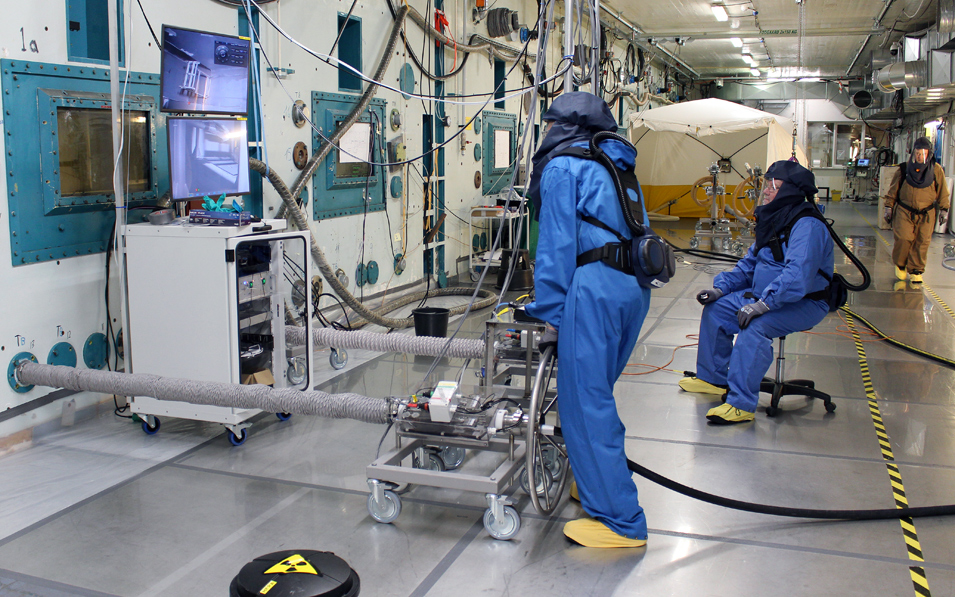
09 May Initial cleaning of Hot Cells complete
The initial cleaning has removed 85 percent of the radioactivity in the Hot Cell plant. Watch a video about how the team last removed hotspots in one of the cells.
D The six connected concrete cells in the Hot Cell plant were used from 1964 to 1989 to handle radioactive materials. Due to the high level of radiation, initial cleaning has been carried out by remotely operated sandblasting. It has taken a year and a half, and several years of planning and preparatory work have passed, including developing the mechanical arms to be used.
The walls, floors and fixtures of the cells have been sandblasted with steel particles through a series of holes in the 1.7 metre thick walls. Once the flakes of contaminated paint have accumulated with the used steel particles, it is all sucked up into a closed system through a vacuum cleaner arm and fed into shielded drums. There have typically been two craftsmen about the task itself. A health assistant has stood nearby to keep an eye on radiation levels, while an engineer has monitored all systems in a control room next to the work area.
From July to December 2017, the first three of the six Hot Cells were sandblasted. Here, the radioactive contamination was lowest, so the sand blast started here to gather experience with the equipment for the last three cells where, according to measurements, the radioactivity was higher.
At the beginning of 2018, the fourth cell was set in motion. It and the last two cells have been used for various mechanical experiments, including for grinding, so it was expected that there would be larger amounts of radioactive dust. However, it was not prepared that the hover dust would get so well attached to the filters. The coarse cleaning had to be paused for five months while additional equipment was developed for the filters(read more).
Thereafter, the work proceeded without major challenges, and by the end of the year the rough cleaning of all six cells could be declared completed. However, the equipment had not fully served its purpose. As seen in the video below, in January, an extra effort was made in one cell to remove a few hotspots – small areas or depressions that store elevated radioactivity.
The radioactive waste from the purification has so far filled 24 drums, which are packed in four containers and placed in intermediate storage. Measurements show that the total radioactivity in the six Hot Cells is reduced by approximately 85 percent. This means that in the next phase, employees will be able to enter the cells briefly to remove the furniture and install a robot to perform the remote-controlled intermediate cleaning. It is then expected that the radiation level inside the cells has become so low that the final cleaning can be done manually.


